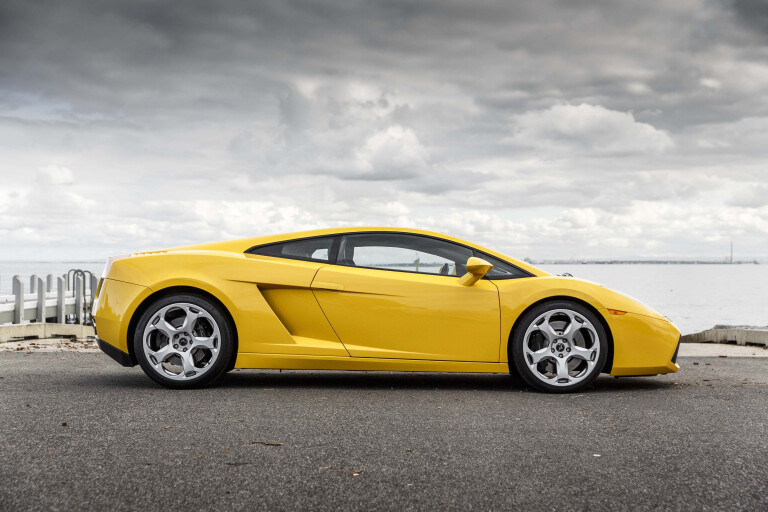
Lamborghini’s junior supercar line ended when the 410th and last Jalpa rolled out of the Sant’Agata Bolognese factory on the 22nd July 1988. Few realised that it would be 15 years before the next understudy to the iconic V12 supersports models would appear.
That can largely be attributed to the chaos that reigned at Lamborghini at the time. Then-owners Chrysler binned not only the Jalpa but the Gandini-styled P140 prototype that was slated to replace it. Chrysler then sold the company for US$25.2m in 1994 to Indonesian conglomerate MegaTech, which then divided it 60/40 between V’Power and Malaysian concern Mycom Sedtco.
The Italdesign Cala shown at the 1995 Geneva Motor Show was the car many believed would be the next baby Lamborghini. Powered by a 294kW mid-mounted V10 engine, the Cala was built on the chassis of Gandini’s stillborn P140 prototype and offered a way back into the market, but there were many obstacles still in its path. Enter ex-Bugatti engineering maestro Maurizio Reggiani.
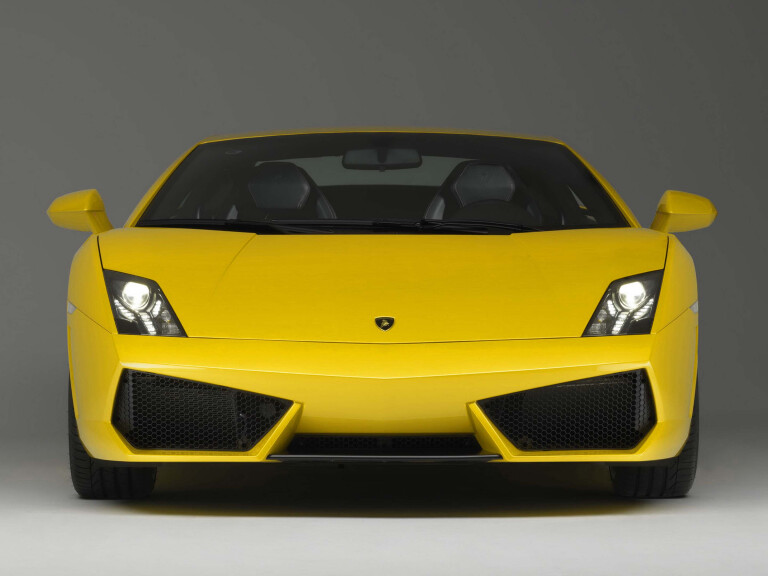
“I was the man who went to Audi in order to ask them if they could supply a powertrain to us,” he said in a 2019 Hagerty interview.
“The idea came because this time around, we started to think about a second model line we called Baby Diablo.
This is what became the Gallardo, and [because] our shareholder was an Indonesian company, we didn’t have the capital for a big investment like a new powertrain.
“Inside Lamborghini, we realised that one possible powertrain we could have used was the Audi A8’s. Rotate it by 180 degrees, put it in the rear, and with the front differential, you only change the direction. We approached Audi to ask if they could supply us with it.

We worked on this for seven or eight months. After that came the proposal to buy Lamborghini instead, and luckily, our shareholders agreed. After this, the V8 project got shelved, and we started working on the Gallardo,” he said.
“As for the Gallardo, the V10 engine, the aluminium space frame, everything was new. And that V10… we developed in-house in Sant’Agata. Not just that, but all the support structures, the chassis, all the engineering was done in Sant’Agata.”
Audi’s takeover of Lamborghini was completed in 1998 and Lamborghini’s director of design, Luc Donckerwolke (now at Hyundai) takes up the story. “We launched the project in 1999, asking Italdesign Giugiaro to come up with a design proposal.”
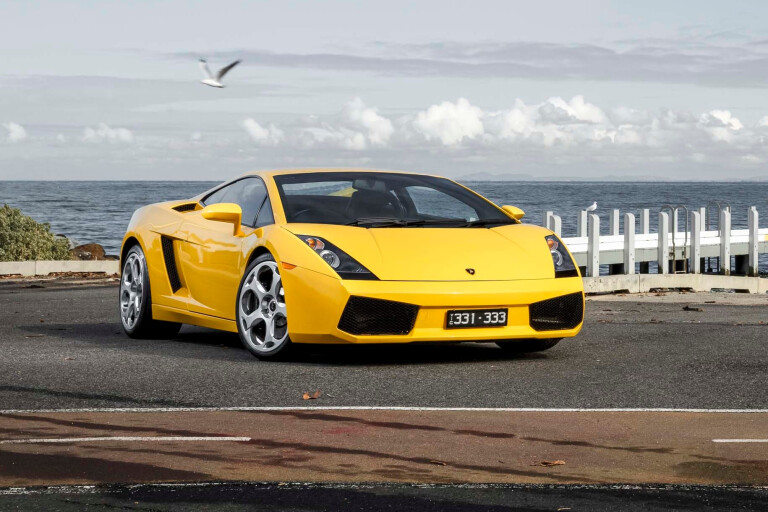
Italdesign’s Fabrizio Giugiaro recalls a very loose brief.
“We were given a very free hand. They simply asked us “How do you imagine a new, smaller Lamborghini”? They did want it to be extremely innovative, but still faithful to the brand’s tradition.”
The short nose and characteristic Countach-derived flyline were incorporated in Italdesign’s first proposals , but Donckerwolke’s team wanted a more chiselled, architectural look. “Italdesign’s idea was very interesting, but naturally a brand has to manage its own image,” he said.
The tail and flanks were cleaned up when compared to Italdesign’s 1:1 chalk model. “If you change one thing, you have to modify other items to go with it,” noted Donckerwolke.
“We also had to ensure that the project complied with Audi quality standards, as well as keeping a watchful eye on the integration of carry-over components.”
When the silks were whipped off the Gallardo at the 2003 Geneva show, everybody forgot about the Cala. Instantly. Here was something decisively more modern, with taut surfacing and classic Lamborghini proportioning but which looked as if it had been run on a hot wash cycle.
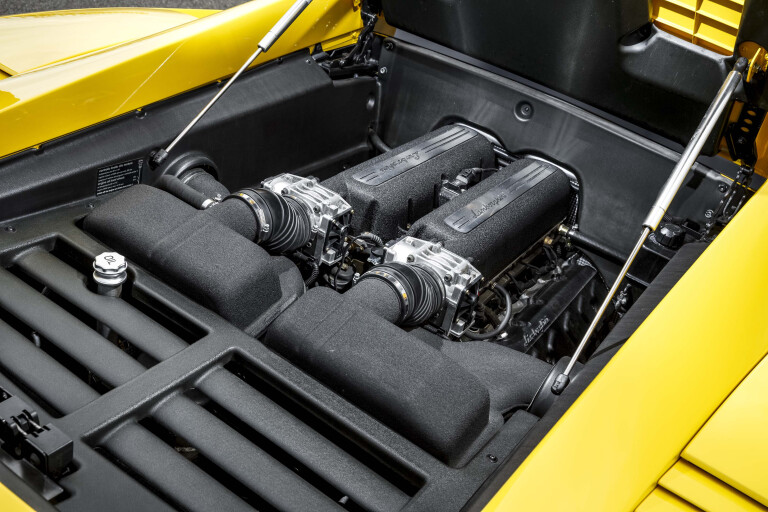
The Gallardo was tiny. At 4300mm long, it’s comfortably shorter than a Ford Focus, and represented a refreshing change from the leviathan V12 halo models.
Yet it packed a 368kW V10 at a time when Ferrari was delivering its 360 Modena with just 294kW. Even the racy Challenge Stradale version could only manage 313kW.
Lamborghini had decisively one-upped Maranello, knowing that the Gallardo’s power and torque also eclipsed the forthcoming F430. Power for the Gallardo was lifted to 382kW in a 2005 update, which also tweaked the suspension, steering and exhaust, with the Spyder open-top version arriving in 2006.

Ferrari clapped back with the 375kW F430 Scuderia track-oriented version at the 2007 Frankfurt Show, but Lamborghini had again got its revenge in first, spiking Ferrari’s guns just a few months earlier at the Geneva show with the 390kW Gallardo Superleggera.
While Sant’Agata held a clear power advantage over its key rival, it’s up for debate whether the first generation Gallardo was a better car to drive than the F430.
The Superleggera was a step in the right direction, but the Lamborghini lacked the adjustability and tactility of the Ferrari. All-wheel drive made it a rocket off the line but on a track the V8 Ferrari offered keen drivers a subtler palette of options.
The soundtracks are markedly different too. Where the V8 Ferrari has a purer, cleaner note, the Gallardo – especially those models with the updated post-’05 exhaust system – is an angrier and arguably more dramatic thing.
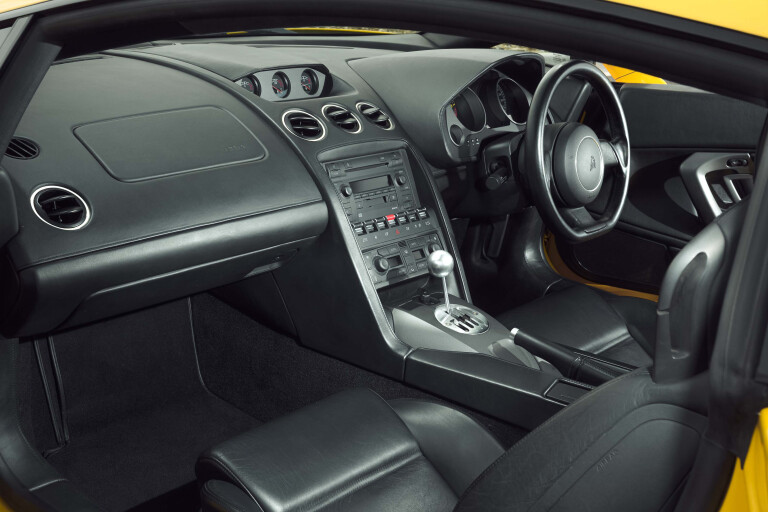
Audi’s influence could be clearly felt inside, where materials quality reflected the uptick seen in the Ingolstadt-influenced Diablo 6.0-litre. Although those in the know could identify the Audi parts, that was no bad thing given the ergonomic catastrophes that Sant’Agata had unleashed in the past.
Reliability was also much improved, but early clutches could prove problematic. The clutch materials grew progressively better until Lamborghini cracked the problem with a sintered plate on the ‘05 models. Likewise prematurely wearing anti-roll bar bushes were improved with better materials.
The biggest change to the Gallardo came in 2008 when a facelifted second-generation car was launched. Although there are many who feel that the update lost some of the original’s design purity, the fitment of a more powerful 5.2-litre direct-injection V10, good for 412kW/540Nm provided ample recompense.

It need to as well, as the second-gen Gallardo would enjoy just a year in market before Ferrari launched the magnificent 419kW/540Nm 458 Italia and gained a superiority in this sector that hasn’t been ceded since.
Both the coupe and the Spyder versions of the refreshed Gallardo were suffixed with the LP 560-4 identifier, indicating Longitudinale Posteriore (longitudinal rear mounted), 560PS and four-wheel drive. The LP 570-4 Superleggera arrived in 2010, equalling the 458 Italia’s power and torque outputs, with the even lighter Performante arriving the following year.
Perhaps the most interesting versions were the rear-drive models, the first Lamborghinis to send power solely rearwards since the Diablo. The LP 550-2 versions also arrived in 2011 in both coupe and Spyder forms, following limited-run Balboni and Bicolore editions.

There’s a befuddling cornucopia (some 32) of limited-run specials, especially later in the Gallardo’s life as Lamborghini desperately tried to keep the car relevant.
Gold edition, Tricolore, Nera, 50th Anniversary, Noctis, Bianco Rosso, Singapore, SE, Malaysia, India, Bianco Canopus, Hong Kong 20th Anniversary and Nero Nemesis models all came and went, but perhaps the key version of note was the LP 570-4 Super Trofeo Stradale of 2011.
Only 150 units were built, based on the facelift LP 570-4 Superleggera. Fully 70kg lighter than a standard Gallardo, the ‘STS’ tipped the scales at a mere 1340kg and incorporated many of the performance features from the Super Trofeo track car.
Only two were earmarked for export to Australia and buyers chose from Rosso Mars, Grigio Telesto or Bianco Monocerus contrasted with an optional gloss black roof. The rear spoiler generated triple the downforce of the standard Gallardo, and the engine cover featured a racing-style quick-release system for rapid access.
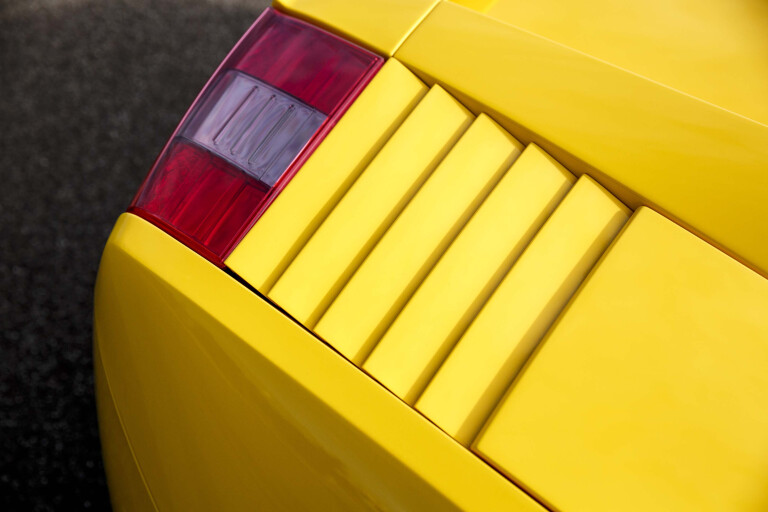
With an e-gear transmission and an extended carbon/Alcantara interior finish, the STS ran on special Pirelli P Zero Corsa tyres and most were specified with the optional four-point harnesses and roll cage. This car was then mildly revised to become the Squadra Corse.
While Ferrari’s junior supercars had dispensed with the gated six-speed manual transmission when the F430 was shuffled out to grass in 2009, Lamborghini persisted with offering its customers a three-pedal option right up until Gallardo production ended.
The last vehicle built was a red LP 570-4 Spyder Performante which, in November 2013, drew down the curtain on a decade and 14,022 cars being built. That’s not bad going considering that between them, its Jalpa, Silhouette and Urraco predecessors combined for just 1255 units.
It would also pave the way for the success of its replacement, the Huracán, which managed to outsell the Gallardo within just five years of release.

The Gallardo thus secured its legacy as arguably the most pivotal sports car, at least from a commercial standpoint, that Lamborghini ever built. It’s recognised now as an exemplar of purity, offering, by today’s standards at any rate, a lightweight, aggressively packaged, normally-aspirated sports coupe or cabrio that in any guise was never less than an event.
So what that the doors didn’t open upwards?
The triumph of the Gallardo was that despite the Audi influence, it had enough about it to make you want to believe that it was Lamborghini to its boots. In an inevitably electrified future, a screaming V10 and that chiselled styling makes an increasingly desirable combo.
As it embraces modern classic status, the Gallardo seems to make ever more sense, or at least as much sense as an Italian supercar ever can. More power to it.
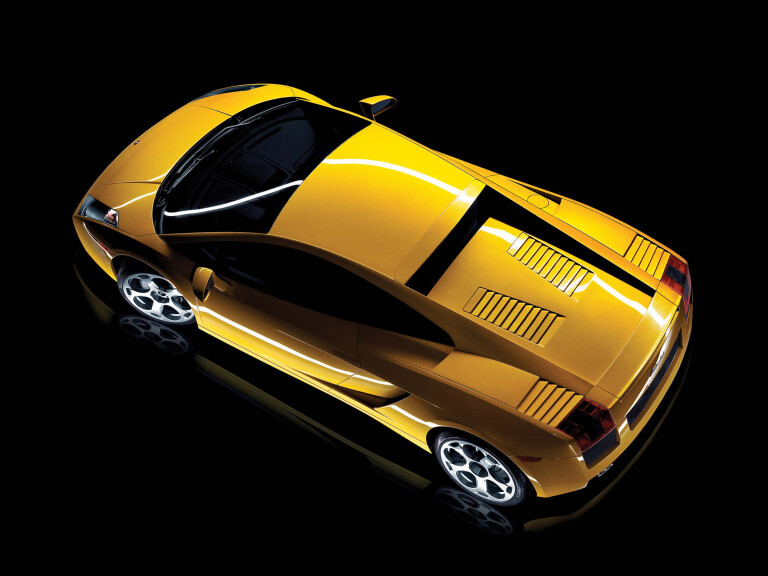
Max Attack on the Apple Isle
The Gallardo carved its own piece of Aussie motorsports history by claiming outright wins at Targa Tasmania four times. The Gallardo won in 2010, 2012, 2013 and 2015, all with the combination of Jason White driving and John White navigating.
Their Super Trofeo Stradale burnt to the ground in 2014 while competing in Targa West, with the 2015 victory coming at the wheel of its replacement, a 2013 Gallardo Squadra Corse. Point proven, the Whites then defected to Dodge, winning multiple events in a Viper ACR.

Blues and Twos
Yes, the Italian police really did get functional Gallardo police cars. A pair of 2005 cars racked up over 100,000km each for Bologna and Rome’s plod, while in 2008 a pair of second-gen cars were bought for the Lazio division.
Unfortunately, one was written off a year later when a SEAT Ibiza ambled out of a servo and the fast-moving Lambo glanced off it into a row of parked vehicles. The other continued to be used for high-speed duties, was equipped with a defibrillator and was sometimes utilised for human organ transportation.
| Model | Lamborghini Gallardo (2003) |
|---|---|
| Engine | 4961cc V10 ( 90°), DOHC, 40v |
| Max power | 368kW @ 7800rpm |
| Max torque | 510Nm @ 4500rpm |
| Transmission | 6-speed manual or 6-speed automated manual |
| Weight | 1430kg |
| 0-100km/h | 4.2sec (claimed) |
| Price (now) | c.$125,000 |



COMMENTS